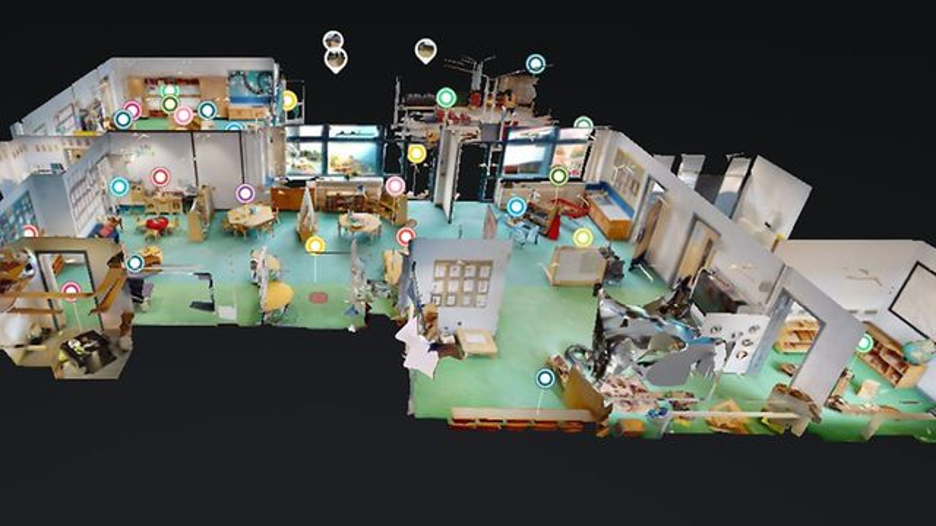Why schools are choosing virtual tours
Last month we wrote about the green benefits of virtual tours for different sectors, including education. We felt as the potential of virtual tours for schools is so vast and exciting it required a blog post all of its own so we could explore the possibilities in more depth. Virtual tours are becoming increasingly popular with schools as they allow prospective children and their families to explore the school and its facilities, learning more about their provision, curricula and the specialist support available.
Virtual Reality can support home learning
Over the past year, homeschooling has become the bane of parents’ lives with research highlighting that parents are a lot more stressed out with trying to homeschool under that latest round of restrictions (1). Virtual reality (VR) is more engaging and interactive than traditional lessons and therefore can allow students to feel more connected to their learning while they’re away from the classroom. There are endless ways that virtual tours can support home learning, from providing links to class pages on a school’s website and online learning; videos from teachers with messages to children; to sharing curriculum maps with parents and even to display children’s work at the end of a topic. Virtual Reality can transport students around the world without having to leave the house in the form of virtual field trips. If used correctly, it can be a great way of complimenting a child’s education at home. (2)
As well as supporting home learning, virtual tours have meant that parents and children can continue to enjoy the benefits of open days, guided tours, and transition days while schools remain closed under Covid restrictions. Schools have reported an overwhelmingly positive impact of these tours, with some children visiting them repeatedly in the weeks leading up to their attendance. However, the potential of virtual tours for the education sector extends well beyond Covid. Given the growth of VR within education, and the positive response from schools, it is predicted that VR will make it onto the curriculum at some point in the future. Curriculum aligned content and structured virtual reality lesson plans have already been developed and are available in the UK. (3)
Virtual tours are attractive to visitors and allow schools to showcase their strengths
As well as supporting learning, virtual tours allow education facilities to showcase their strength and therefore can attract more admissions. There are many stakeholders who will judge a school by its website and content: prospective and existing families and students; job candidates; Governors; the local community; boards of directors in trusts; the local authority and even the dreaded OFSTED. For all of these stakeholders, it is important schools present well. A virtual tour demonstrates that technology is a priority within the school and that the school is forward-thinking, innovative and creative.
Reduces pupil anxiety
VR has been found to be helpful for students with autism, too. A study by Strickland et al. (2007) showed that children with autism could apply skills they had learnt in a virtual environment to the real world. This included skills in fire and street/road safety. (4)
Insight UK have created tours for many schools with the primary focus being to reduce student anxiety (eg the Norwich Opportunity Virtual Tour Project June 2020). This works both for students who are unable to visit the school or have their transition day due to COVID, but also children with additional needs such as autism who may experience high levels of anxiety. Working with SENCOs and educational specialists, Insight UK have developed specialised virtual tours to meet the needs of children with special educational needs. Incorporating features such as ambient sounds in sensory rooms, voiceovers to read text for those with learning difficulties and automatic walkthroughs of the tours for people with limited IT or motor skills who may find navigating the tour more challenging.
In this short blog we have discussed some of the exciting ways that virtual tours are being used by schools and the benefits. While we hope that Covid and the need for homeschooling won’t be around forever, experts have advised organisations to prepare for the uncertainties that lie ahead.
Author of Teaching for Tomorrow, Michael McQueen, writes: “We are staring down the barrel of a very turbulent few decades of widespread change and so the need for educational systems and educators themselves to be future-fit has never been greater.” (5) Bearing this in mind, introducing virtual reality technologies now is a smart way to build resilience and help future proof our education system.
As the great educationalist, John Dewey, remarked over a century ago: “If we teach today’s students as we taught yesterday’s, we rob them of tomorrow.”
Author: Laura Hackett at Ethicalwrites
Notes:
University Of Oxford-Parental mental health worsens under new covid-19 restrictions
Prime VR- VR and homeschooling- how to get started
Immersion VR-VR for Education
NCBI-An Evolution of Virtual Reality Training Designs for Children With Autism and Fetal Alcohol Spectrum Disorders
Michael Mcqueen-3 ways to future proof our schools, students and education system.


